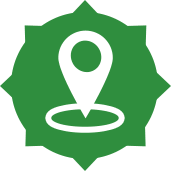Spatial analysis is the process of analyzing and interpreting geographic data to understand patterns, relationships, and trends. It can be used to make decisions, identify potential problems, and develop solutions in a variety of areas. With the right data and a little bit of GIS knowledge, you can use the tools in the Spatial palette to gain insights and make informed decisions
In Alteryx, spatial analysis can be performed using the Spatial palette, which provides a set of tools for working with geographic data. Some key tools are:

The Create Points tool in Alteryx allows you to create a point feature from X and Y coordinates. Point features are used to represent a single location on a map, and can be used to represent things like the location of a store, a city, or a specific address.
It takes as input X and Y coordinates and any additional attributes you want to associate with the point feature. For example, you may have a table of addresses and corresponding zip codes, and you want to create point features for each address so that you can map them.
The tool will output a spatial object that can be visualized on a map and used in other spatial analysis. The output point layer can be used in other spatial tools such as buffer to create a buffer around a point of interest.

The Buffer tool in Alteryx is used to create a buffer around a point (or a line or a polygon). A buffer is a zone around a location, and it can be used to define a certain distance or radius from that location.
The Buffer tool takes as input a spatial object (point, line, or polygon) and a buffer distance. The buffer distance is the distance or radius around the input feature in the units of the spatial reference system.
The output of the tool is a new spatial object that represents the area within the buffer. The new object can be visualized on a map and can be used in other spatial analysis, such as intersecting with other spatial layers to understand the relationship between the buffer and other features.
For example, you can use the Buffer tool to create a buffer around a point of interest, such as a store, and then use the Spatial Process tool to analyze other spatial objects that fall within that buffer.

The Spatial Process tool creates a new spatial object from the combination or intersection of two spatial objects. It gives the option to combine objects, remove overlapping areas and create intersections or inverse intersections.
Often the create intersection action is used. It finds the areas where two or more spatial objects overlap and creates a new layer that contains the areas where they overlap. This information can be used to make decisions or understand relationships between different spatial data.
In part II we will discuss how to create polygons and polylines from points with "Poly-Build" and how to split them again with "Poly-Split". Also, the "Trade Area" tool will be discussed.
